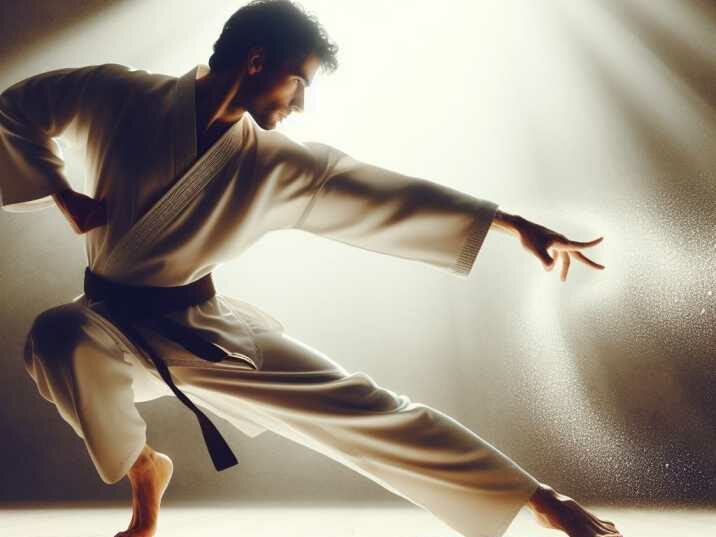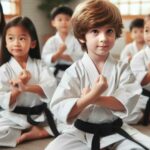Introduction:
Table of Contents
In the realm of martial arts, Kung Fu stands out as a testament to discipline, skill, and precision. Originating from ancient China, Kung Fu encompasses a diverse array of fighting styles, each with its unique techniques and philosophies. One of the most intriguing aspects of Kung Fu techniques for redirecting an opponent’s force, turning their momentum against them with grace and finesse. In this article, we’ll delve into some of the most famous Kung Fu techniques for achieving this feat, unlocking the secrets of this venerable art form.
Understanding the Essence of Kung Fu:
Kung Fu, which translates to “achievement through great effort,” is not merely about physical combat but also about cultivating the mind and spirit. It encompasses a holistic approach to self-defense, incorporating elements of philosophy, meditation, and discipline. Practitioners of Kung Fu strive for harmony between body and mind, seeking to achieve balance and fluidity in their movements.
The Importance of Redirecting Force:
In Kung Fu, redirecting an opponent’s force is a fundamental principle that allows practitioners to defend themselves effectively while conserving energy. Rather than meeting force with force head-on, Kung Fu emphasizes the art of yielding and redirecting, harnessing an opponent’s momentum to gain the upper hand. By understanding the principles of leverage, balance, and timing, a skilled practitioner can neutralize even the most formidable attacks with minimal effort of Kung Fu techniques for redirecting an opponent’s force.
Famous Kung Fu Techniques for Redirecting an Opponent’s Force:
1. Tai Chi Push Hands:
Tai Chi, a gentle and flowing form of Kung Fu, is renowned for its emphasis on relaxation and sensitivity. In Tai Chi Push Hands, practitioners engage in a slow, rhythmic exchange of energy, seeking to maintain their balance while simultaneously disrupting their opponent’s equilibrium. By cultivating sensitivity to their opponent’s movements, Tai Chi practitioners can effortlessly redirect force and control the flow of the encounter.

2. Wing Chun’s Centerline Theory:
Wing Chun, a highly efficient form of Kung Fu, focuses on close-range combat and rapid strikes. Central to Wing Chun is the concept of the centerline, an imaginary line running down the body’s midline that represents the most direct path to an opponent’s vital points. By maintaining control of the centerline and intercepting an opponent’s attacks along this path, Wing Chun practitioners can redirect force with precision and efficiency.
3. Baguazhang’s Circle Walking:
Baguazhang, characterized by its circular footwork and evasive movements, emphasizes fluidity and adaptability in combat. Central to Baguazhang is the practice of Circle Walking, in which practitioners move in continuous, circular patterns, evading attacks while maintaining their own momentum. By circling around their opponent and constantly changing angles, Baguazhang practitioners can effectively redirect force and create openings for counterattacks.
4. Hapkido’s Joint Locks and Throws:
Hapkido, a Korean martial art influenced by Kung Fu, places a strong emphasis on joint locks, throws, and grappling techniques. In Hapkido, practitioners utilize an opponent’s energy against them, redirecting force through precise manipulation of joints and leverage. By applying joint locks and throws with fluidity and control, Hapkido practitioners can neutralize threats with minimal effort, relying on timing and technique rather than brute strength.
5. Jeet Kune Do’s Intercepting Fist:
Developed by the legendary Bruce Lee, Jeet Kune Do is a martial art that emphasizes simplicity, directness, and personal expression. Central to Jeet Kune Do is the concept of the Intercepting Fist, a rapid and preemptive strike designed to intercept an opponent’s attack before it fully develops. By preemptively striking and disrupting an opponent’s rhythm, Jeet Kune Do practitioners can effectively redirect force and control the flow of the fight.

Table of Information Kung Fu Techniques for Redirecting an Opponent’s Force:
| Technique | Description |
|---|---|
| Tai Chi Push Hands | Slow, rhythmic exchange of energy for balance control |
| Wing Chun’s Centerline | Focuses on intercepting attacks along the centerline |
| Baguazhang Circle Walking | Circular footwork for evading and redirecting force |
| Hapkido Joint Locks and Throws | Utilizes joint manipulation for redirecting force |
| Jeet Kune Do Intercepting Fist | Preemptive strikes to disrupt opponent’s attacks |
Conclusion:
The intricate tapestry of the art of Kung Fu techniques for redirecting an opponent’s force stands as a testament to the power of skill over brute strength. Through centuries of refinement and practice, Kung Fu practitioners have honed techniques that allow them to harness an opponent’s momentum with precision and grace. By mastering these techniques, practitioners not only defend themselves effectively but also embody the timeless principles of discipline, balance, and harmony.
FAQs (Frequently Asked Questions):
Q1: Can anyone learn Kung Fu techniques for redirecting an opponent’s force?
A1: Yes, Kung Fu techniques can be learned by anyone willing to dedicate time and effort to practice. While it may require patience and discipline, even beginners can benefit from the principles of redirecting force.
Q2: Are Kung Fu techniques effective in real-life self-defense situations?
A2: Yes, many Kung Fu techniques have been proven effective in real-life self-defense scenarios. However, proficiency requires consistent practice and understanding of the underlying principles.
Q3: How long does it take to master Kung Fu techniques for redirecting force?
A3: The time it takes to master Kung Fu techniques varies depending on individual aptitude, dedication, and the guidance of a qualified instructor. Progress is typically measured in years rather than weeks or months.
Q4: Are there any age restrictions for learning Kung Fu?
A4: Kung Fu can be practiced by individuals of all ages, from children to seniors. However, the intensity of training may vary depending on age and physical condition.
Q5: Can Kung Fu training improve physical and mental well-being?
A5: Yes, Kung Fu training offers numerous benefits for both physical and mental health, including improved flexibility, strength, focus, and stress relief.


